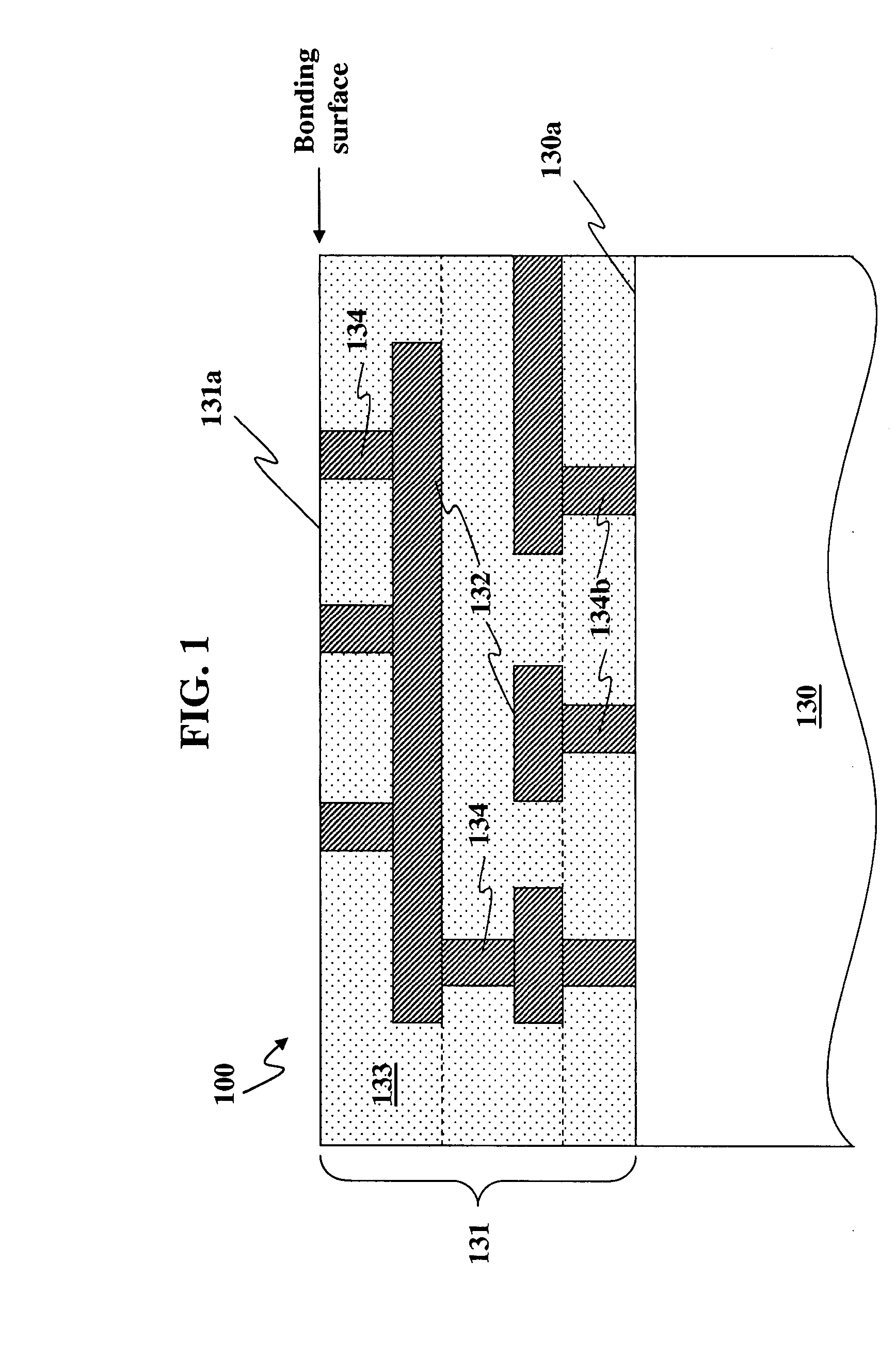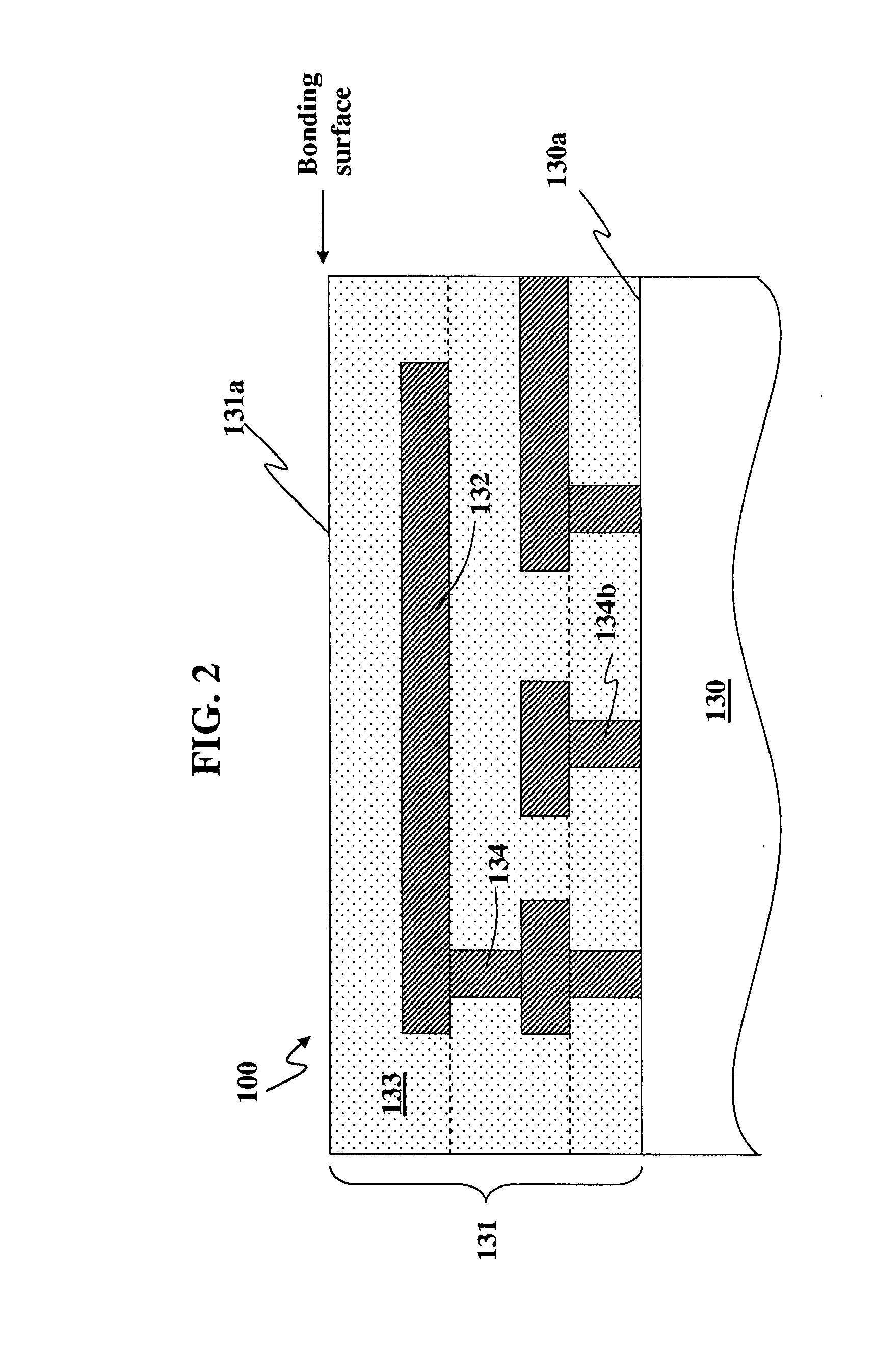Semiconductor bonding and layer transfer method
a layer transfer and semiconductor technology, applied in the field of semiconductors, can solve the problems of large chip area consumption of laterally oriented devices, large amount of chip area of processor circuits, and large amount of idle processor circuits for many cycle times,
- Summary
- Abstract
- Description
- Claims
- Application Information
AI Technical Summary
Benefits of technology
Problems solved by technology
Method used
Image
Examples
Embodiment Construction
[0023]FIGS. 1-23 are simplified sectional views of steps in fabricating circuitry 100 using a semiconductor bonding transfer method in accordance with the present invention. It should be noted that in the following figures, like reference characters indicate corresponding elements throughout the several views. In this embodiment, circuitry 100 includes separate portions in which it is desired to bond them together. As will be discussed in more detail below, one portion is carried by an acceptor substrate and another portion is carried by a donor substrate. In accordance with the invention, the portion carried by the donor substrate is bonded to the portion carried by the acceptor substrate and then the donor substrate is removed. It should be noted that the portions carried by the donor and acceptor substrates can have many different configurations, but only a few are discussed herein.
[0024] The portions carried by the acceptor substrate are shown in FIGS. 1-5 and the portions carr...
PUM
 Login to View More
Login to View More Abstract
Description
Claims
Application Information
 Login to View More
Login to View More - R&D
- Intellectual Property
- Life Sciences
- Materials
- Tech Scout
- Unparalleled Data Quality
- Higher Quality Content
- 60% Fewer Hallucinations
Browse by: Latest US Patents, China's latest patents, Technical Efficacy Thesaurus, Application Domain, Technology Topic, Popular Technical Reports.
© 2025 PatSnap. All rights reserved.Legal|Privacy policy|Modern Slavery Act Transparency Statement|Sitemap|About US| Contact US: help@patsnap.com



